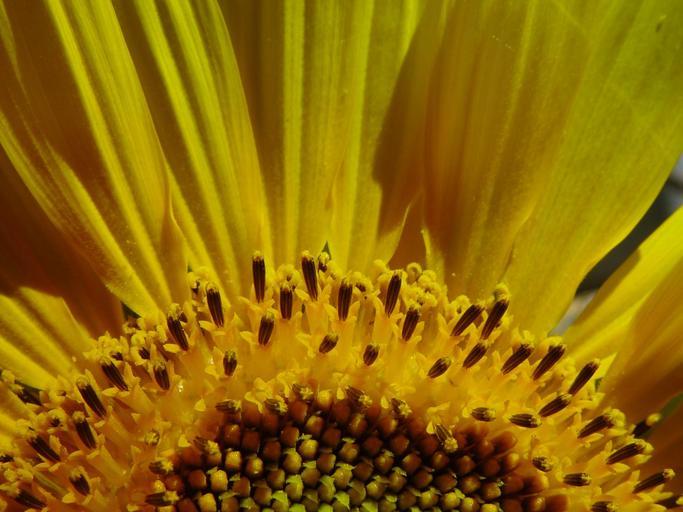Introduction
In the realm of aesthetic expression, walls often serve as blank canvases waiting to be transformed into portals of creativity. The artistic techniques that bring depth and dimension to your walls can elevate a mundane space into a vibrant sanctuary of self-expression. From aesthetic photography to intricate linocut printing techniques, a multitude of methods exist to enhance the visual narrative of your home. This article delves into various artistic choices that not only beautify but also evoke emotions, reflect identity, and tell stories.
What Are the Artistic Techniques That Bring Depth and Dimension to Your Walls?
When discussing artistic techniques that enrich wall spaces, we refer to a blend of traditional and contemporary practices that engage viewers on multiple levels. These techniques encompass everything from abstract portraits to decorative art prints, creating an environment that resonates with personal aesthetics and emotional reflections. By incorporating diverse styles such as self-portrait photography or faceless portraits, one can achieve a unique ambiance tailored to individual tastes.
1. Aesthetic Photography: Capturing the Essence
The Role of Aesthetic Photography in Interior Design
Aesthetic photography plays a pivotal role in interior design by infusing spaces with personality and character. It creates focal points, draws the eye, and invites contemplation. Whether it's capturing nature's beauty or urban landscapes, these images serve as powerful reminders of our shared experiences and surroundings.
Techniques for Selecting Aesthetic Photographs
- Identify Themes: Choose photographs that resonate with your personal narrative or home environment. Consider Color Palette: Select images with colors that complement your existing decor. Vary Sizes: Mixing large canvases with smaller framed photography creates visual interest.
2. Self-Portrait Photography: Reflecting Identity on Your Walls
The Significance of Self-Expression in Art
Self-portrait photography transcends mere representation; it encapsulates emotions, thoughts, and experiences. When displayed on walls, these pieces offer insights into the artist’s identity while encouraging viewers to reflect on their own.
Tips for Crafting Meaningful Self-Portraits
- Explore Different Portrait Styles: Experiment with lighting, angles, and props. Embrace Vulnerability: Authenticity resonates more than perfection. Utilize Editing Tools: Enhance colors or textures to amplify emotional impact.
3. Contemplative Photography: Inviting Reflection
How Contemplative Photography Enriches Spaces
Contemplative photography encourages viewers to pause and engage deeply with their surroundings. This genre focuses on capturing moments filled with tranquility or introspection—perfect for evoking calm in busy environments.
Best Practices for Creating Contemplative Images
- Seek Quiet Moments: Look for serene landscapes or still life compositions. Focus on Composition: Use negative space effectively to emphasize subject matter. Experiment with Soft Lighting: Natural light can create ethereal effects.
4. Portrait Styles That Add Character
Exploring Various Portrait Styles for Wall Art
Portraits are not limited to traditional representations; they can take many forms—from abstract portraits to faceless portraits—each contributing uniquely to wall aesthetics.
Types of Portrait Styles:
| Style | Description | |---------------------|--------------------------------------------------------| | Abstract Portraits | Focuses on shapes and colors rather than realistic depictions. | | Faceless Portraits | Emphasizes mood over identity by omitting facial features. |
Choosing the Right Style for Your Space
When selecting portrait styles for wall art, consider how each piece interacts with its surroundings and conveys your desired atmosphere.

5. Emotional Reflection in Art
Capturing Emotion Through Visual Storytelling
Art has the power to evoke emotions; therefore, understanding how color palettes influence feelings is crucial when curating wall art collections.
Key Emotions Associated With Colors:
| Color | Emotion | |------------|------------------------| | Blue | Calmness | | Red | Passion | | Yellow | Happiness |
Techniques for Emotional Engagement in Art Displays
To evoke deeper emotional responses through art:
Create thematic groupings based on emotion. Utilize lighting strategically to highlight specific pieces. Encourage interaction by placing thought-provoking imagery at eye level.6. Fine Art Photography as Decor
Integrating Fine Art Photography into Home Aesthetics
Fine art photography elevates wall decor beyond mere decoration; it transforms spaces into galleries showcasing thought-provoking imagery.

Selecting Fine Art Pieces That Resonate
When choosing fine art photographs:
- Look for pieces that align with your personal story or interests. Seek out local artists or galleries showcasing unique perspectives. Consider limited editions for exclusivity.
7. Linocut Printing Techniques: Textured Elegance
Understanding Linocut Printing Techniques
Linocut printing offers a tactile quality that can add depth and intrigue to wall displays through rich textures and bold lines.
Steps Involved in Linocut Printing:
Design your image on paper. Transfer it onto linoleum using carbon paper. Carve out sections carefully using special tools. Apply ink evenly before pressing onto paper or canvas.Benefits of Incorporating Linocut Prints in Home Decor
This technique yields unique artworks that cannot be replicated exactly, making each print special—a perfect way to adorn walls while celebrating craftsmanship.
8. Woodblock Printing Techniques: Timeless Craftsmanship
The Allure of Woodblock Printing
Woodblock printing brings an ancient technique into modern interiors, offering visually striking results steeped in tradition.
Key Features of Woodblock Prints:
Bold imagery characterized by strong contrasts. Texture derived from wood grain patterns adds uniqueness. Historical significance enhances the narrative behind the artwork.How To Integrate Woodblock Prints Into Your Home’s Aesthetic
Consider incorporating these prints alongside modern decor elements for an eclectic yet cohesive look—bringing together traditional artistry with contemporary style.
9. Abstract Wall Art: Freedom of Expression
Why Choose Abstract Wall Art?
Abstract wall art allows freedom of interpretation, inviting viewers into a world where emotions reign supreme over literal representation—ideal for stimulating conversation within everyday spaces.
Tips For Curating An Abstract Collection:
Select works based on color harmony within your room’s palette. Group similar styles together while varying sizes for dynamic display options. Balance larger pieces with smaller accents throughout different areas of your space.10. Nature-Inspired Art That Connects Us Back To Earth
The Impact Of Nature-Inspired Artwork On Interiors
Artwork inspired by nature not only beautifies but also fosters a sense of peace—reminding us of our connection with the environment amid urban living conditions.
Ways To Incorporate Nature-Inspired Art:
Use botanical prints alongside real plants for cohesive aesthetics. Hang scenic landscapes that evoke memories tied closely with nature experiences. Mix natural textures like wood frames or linen mats alongside photographic elements depicting outdoor scenes.FAQs about Artistic Techniques That Bring Depth and Dimension to Your Walls
Q1: How do I choose the right artwork for my space? Choosing artwork involves considering color schemes, themes that resonate personally or culturally, and how each piece interacts within its setting—experiment until you find what feels right!
Q2: Can I mix different artistic techniques? Absolutely! Mixing various techniques adds richness—pairing abstract paintings with fine art photography creates engaging contrasts while telling multifaceted stories about identity and experience!
Q3: What if I’m unsure about my style? Start by exploring different forms online! Visit galleries physically & virtually; experiment without pressure until certain styles start resonating!
Q4: Is there a recommended layout for displaying multiple artworks? Gallery walls are popular! Arrange pieces asymmetrically but maintain visual balance using consistent framing styles/colors across varied sizes/shapes helps create unity!
Q5: How can I ensure my chosen art reflects my personality? Select artworks based on emotional connections—they should invoke feelings/experiences important personally rather than merely matching trends—which leads toward authentic self-expression!
Q6: Can changing artwork frequently impact my mood? Yes! Regularly refreshing wall decor gives spaces new energy & may positively alter mood—allowing flexibility in expression keeps environments alive & engaging!

Conclusion
In conclusion, incorporating artistic techniques that bring depth and dimension to your walls extends beyond mere decoration—it’s about cultivating an environment reflective of individuality while inviting exploration, reflection, emotion—all forming connections between viewer & artwork itself! From aesthetic photography capturing fleeting moments beautifully frozen over time through self-expression found within portraits’ intimacy down through diverse printmaking processes bringing tactile elegance alive—all contribute richly layered narratives http://mentalmosaic227.lucialpiazzale.com/the-influence-of-color-on-perception-in-portrait-photography enhancing everyday spaces profoundly! So why wait? Start transforming those bare walls today!